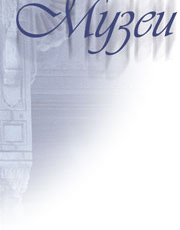
West Africa

Weights for weighing gold dust
The Ashanti people, West Africa. 19th or 20th century
Old Man. Cast bronze.
Height 5 cm. Inv. No. 4843 II
Hunter and Leopard. Cast bronze.
Height 5 cm. Inv. No. 4848 II
Mother and Child. Cast bronze.
Height 4.6 cm. Inv. No. 4844 II
Acquired in 1969 from the L. Yablochkov collection.
These weights for gold dust are, perhaps, the most interesting examples illustrating the culture of the Akan-speaking peoples who inhabit the Republic of Ghana and the Ivory Coast Republic. They are superbly designed either as miniature sculptures representing people and animals, or as many-figured compositions, or else representations of various objects: symbols of chieftainship, weapons, household objects, plants, etc. The simplest variety of weights is a plate with geometric ornamentation. The figurines are stylized and dynamically expressive. They were conceived as "plastic ideograms" of proverbs and sayings: popular story-tellers used them as illustrations of their tales and parables. Thus, one of the weights reproduced here illustrates the proverb: "Better not to shoot at all, than to shoot at a leopard and miss killing it"; another: "A child may love his father but he belongs to his mother and takes his name from her." The geometric patterns decorating weights had complicated symbolic meanings (there were signs of the sun and the moon, symbols of the nyama magic, etc.) and denoted numbers: the Ashanti people had their own system of weights and a kind of calculation system of their own.
|
ПОИСК:
|
© MUSEUMS.ARTYX.RU, 2001-2021
При использовании материалов сайта активная ссылка обязательна:
http://museums.artyx.ru/ 'Музеи мира'
При использовании материалов сайта активная ссылка обязательна:
http://museums.artyx.ru/ 'Музеи мира'